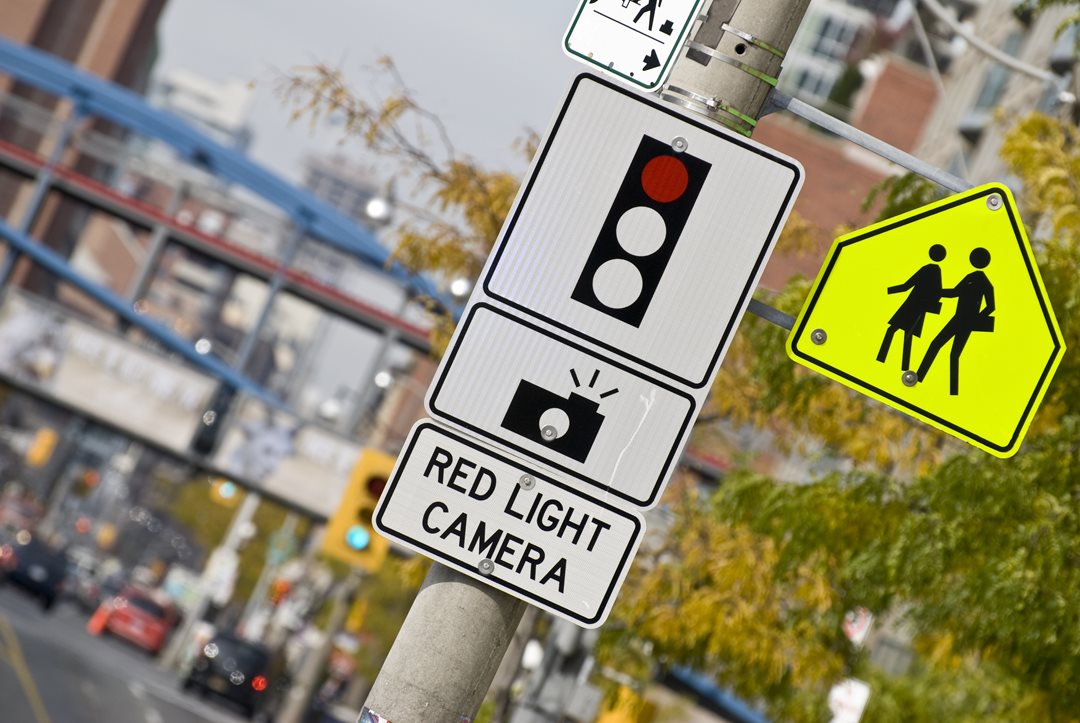Everything you need to know about red light cameras | PEMCO
 You might've expressed your dislike of red light cameras in the past, especially if you've received a frustrating ticket in the mail for cutting that "yellow" light maybe a little too closely.
You might've expressed your dislike of red light cameras in the past, especially if you've received a frustrating ticket in the mail for cutting that "yellow" light maybe a little too closely.
However, there's a reason to appreciate those sometimes annoying red light cameras.
Red-light cameras at intersections reduce your risk of a fatal red-light running crash by 21%, mostly by improving driver attentiveness, according to the Insurance Institute for Highway Safety (IIHS). In fact, once a city starts using cameras at some intersections, the attentiveness effect carries over to other intersections, even if they don’t have cameras.
Researchers note that the cameras work best when cities ensure the length of their yellow lights match Department of Transportation recommendations. (If the yellow light is too short, the presence of cameras can contribute to rear-end collisions if drivers slam on their brakes to stop.)
How red light cameras work
More than one manufacturer makes red-light cameras, and there are differences between models. Generally, red-light cameras work by using both sensors and cameras to monitor traffic at intersections. If a vehicle enters the intersection after the light turns red, the camera will trigger and drivers may notice a camera flash.“Entering the intersection” is commonly defined as the car’s front tires crossing the white stop line after a light has turned red. Cameras often use at least two still photos and may use video, too.
Vehicles and their registered owners are identified by the license plate.
Where are the red-light cameras?
Red-light cameras are mounted separately from traffic lights, since that improves the camera angle. (The ones you see on the traffic light poles monitor traffic flow.)Both Washington and Oregon law allow cities to install red-light cameras. Here’s an updated list from IIHS showing cities across the United States where they’re currently in use. At the time of this writing, there are 18 cities in Washington state with red light cameras, and 11 in Oregon.
How is it determined to send a ticket?
Before a ticket is sent, traffic enforcement specialists review footage to decide if a violation truly has occurred. It wouldn’t be a violation, for example, if the driver got stuck in the intersection while turning left. Right turns on a red light are OK, too, provided drivers fully stop and look carefully before completing the turn. It’s also not a violation if there was a mitigating circumstance, like moving into the intersection to allow an emergency vehicle to pass.Drivers who do run the red light will receive a ticket in the mail, sent to the address listed on the vehicle’s registration. Fines vary, and tickets list a phone number or website to contact if the person receiving the ticket wasn’t driving the vehicle at the time. (Another great reason to make sure you promptlyt transfer the title if you sell your car!)
In Oregon, photo-enforced red-light tickets are considered class B violations (the same as if an officer issued the ticket), potentially impacting your insurance rates.
How to boost your safety at intersections
Intersections are arguably the most dangerous place on the road. When AAA polled drivers in 2017, 93% said running a red light is unacceptable. Yet 43% said that within the past 30 days, they had driven through a light that had just turned red when they could have safely stopped, instead!Red-light cameras work because they reduce temptation to “beat the light” and the threat of a ticket raises attentiveness around intersections. When cities have removed red-light cameras (usually after public outcry claiming they’re an invasion of privacy or were installed as a revenue-generator), accident rates rise. An IIHS study of 14 cities that shut down their cameras revealed a 30% increase in fatal red-light running crashes compared to what would have been expected had the cameras remained on.
To stay safer at intersections, we like recommend these tips:
- Stay mindful of your surroundings. Especially watch for pedestrians.
- Keep your speed down. Never speed up at an intersection to try to make the light.
- Allow some following distance. A few extra feet can give you the time you need to stop if the car in front of you brakes suddenly.
- Use your turn signal. Letting other drivers know your intentions can prevent a collision.
- Look both ways before you enter the intersection, particularly if the light has just turned green. That’s when you’re most likely to get hit by a red light runner
Remember, being equipped with the right information empowers us to make wise, responsible decisions for ourselves and for other motorists on the road. Put simply: The more we know, the better we drive!
Drive safe, PNW!
Share on social media